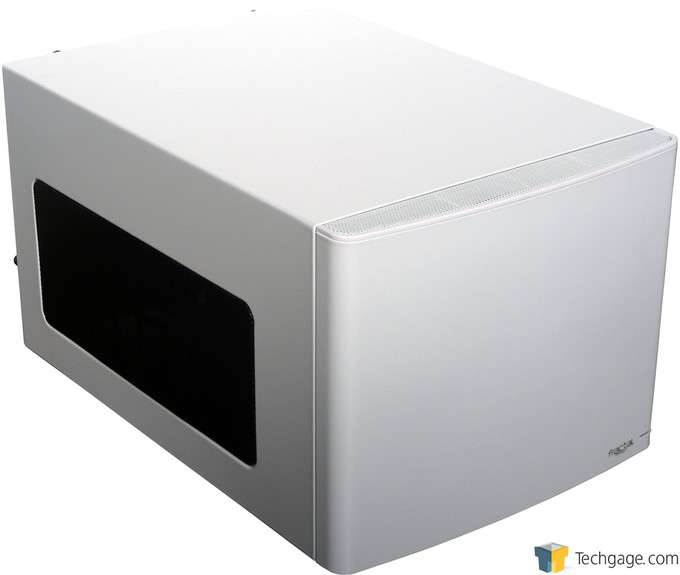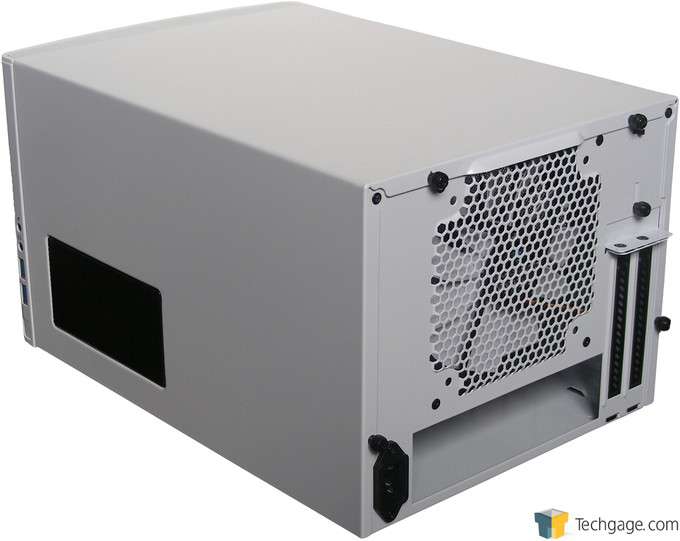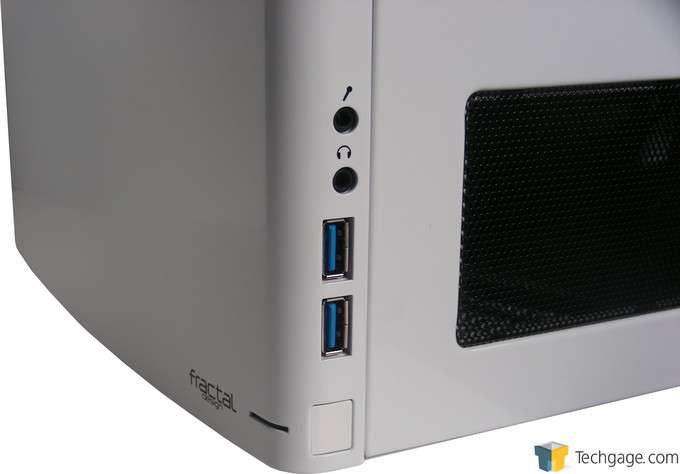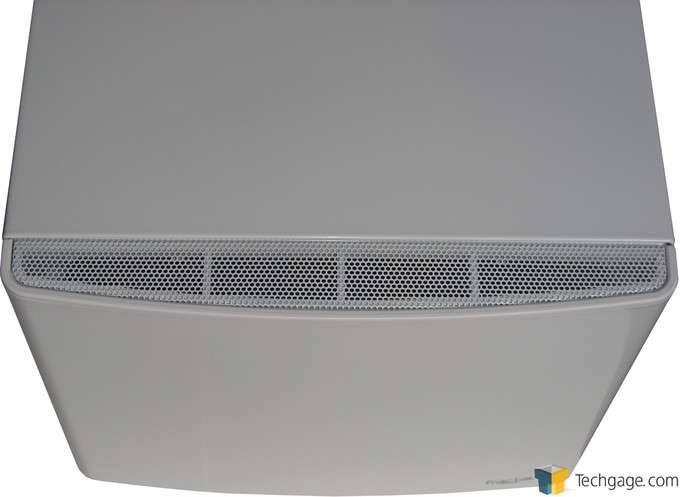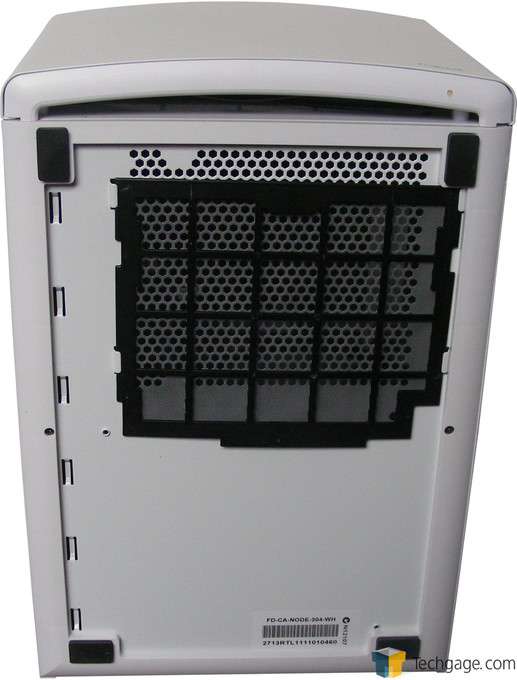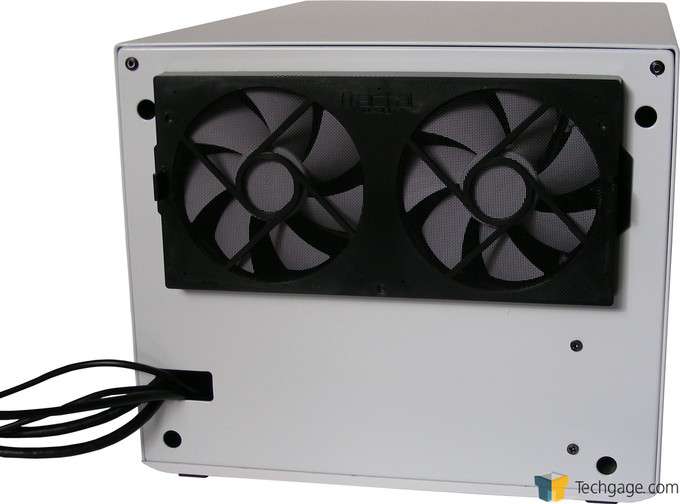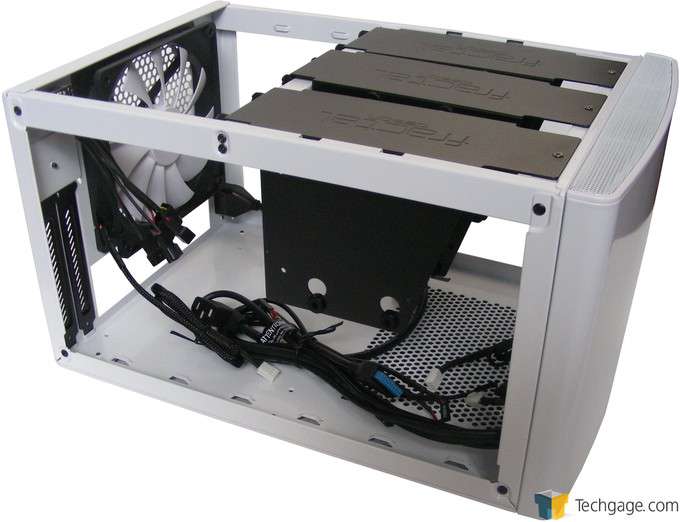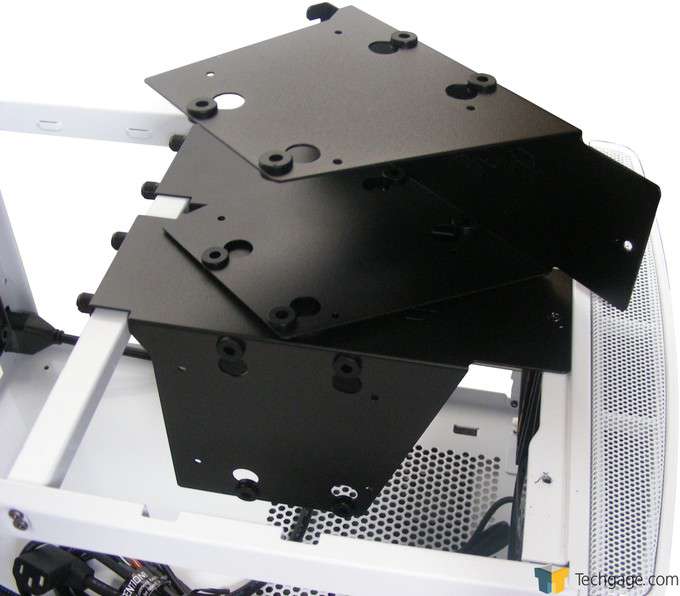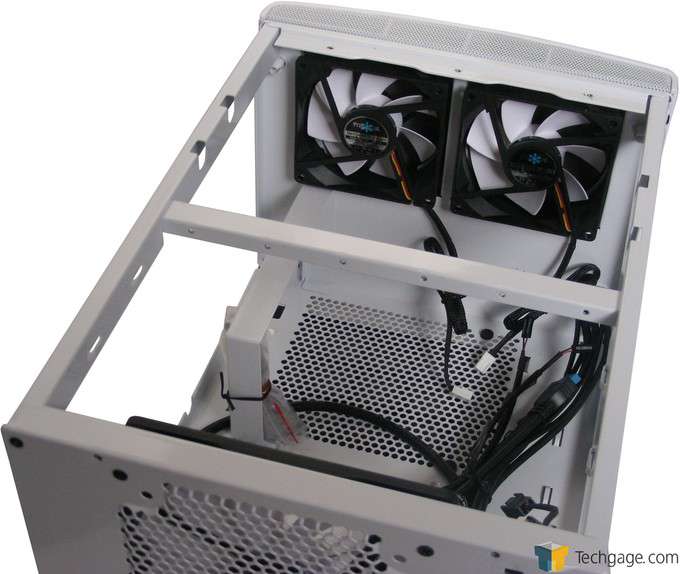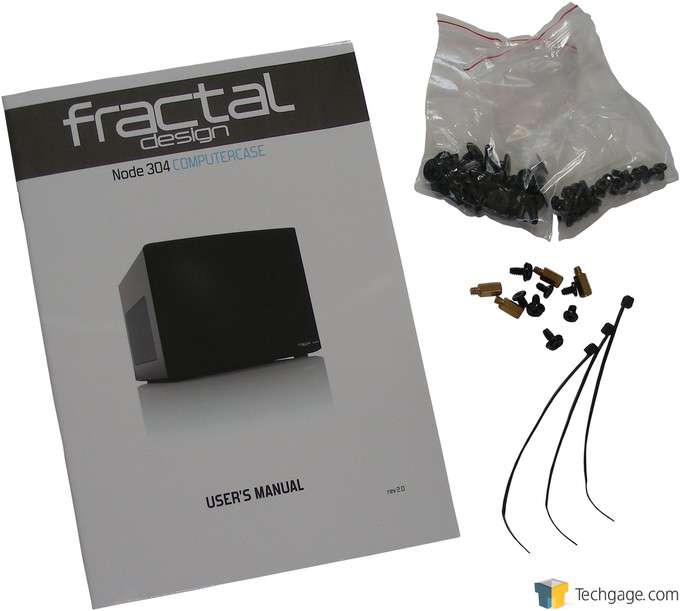- Qualcomm Launches Snapdragon 4 Gen 2 Mobile Platform
- AMD Launches Ryzen PRO 7000 Series Mobile & Desktop Platform
- Intel Launches Sleek Single-Slot Arc Pro A60 Workstation Graphics Card
- NVIDIA Announces Latest Ada Lovelace Additions: GeForce RTX 4060 Ti & RTX 4060
- Maxon Redshift With AMD Radeon GPU Rendering Support Now Available
Fractal Design NODE 304 mini-ITX Chassis Review

If you’re building a new PC and are aiming for the mITX form-factor, chances are good that you’ll be placing this PC out in the open, for everyone to see. That being the case (no pun, of course), you no doubt want it to look good, and be reasonably easy to install in. Fortunately, Fractal’s NODE 304 hits the mark on both accounts.
Page 1 – Introduction, Exterior & Interior
It’s no surprise to our regular readers and other TG staff members that I go coo-coo crazy over cases, even going so far as to change my forum title here at Techgage to “basket chassis”. What really blows my skirt up though, is when a case comes along with a fresh design that looks good while remaining functional. After all, a good-looking case that doesn’t do what’s needed is just a fancy box.
Today we’re looking at the NODE 304 from Fractal Design. It’s not a new case per se, but rather the original NODE, in a new colour. This steel, mini-ITX case, like most other Fractal Design offerings strives to remain simple and clean on the outside, but feature-rich on the inside.
When the NODE 304 was originally released, we weren’t in a position where we could do a review, so we jumped at the chance to rip one open now. Plus, I have a soft spot for white cases. Nonetheless, will the NODE 304 be more than just a fancy box? Read on to find out.
There isn’t much to look at on the front of the NODE 304, other than the Fractal Design logo and a small blue power LED down at the bottom right corner. Those looking for an optical drive bay will be out of luck as this small form factor case doesn’t support one. Around the left side things are much the same with only a large vented area covered with black mesh. This mesh is attached to a plastic frame that serves as an intake area for the video card (GPU), and can be popped out from the inside for cleaning.
Things get interesting on the rear panel with one of Fractal Design’s own 140mm Silent Series R2 fans taking up the majority of the real estate. It’s easy to miss, but just to the right of the fan is the 3-speed, 3-channel fan control switch. At the bottom right is the AC power connector, the motherboard I/O opening in the middle, and two black expansion slot covers to the right. Also visible are the four black thumbscrews that secure the top and sides, which is one solid piece.
More of the black metal mesh is found on the right side, covering another vented area around the power supply. Running from top to bottom along the edge of the front panel are the microphone and headset ports, two USB 3.0/2.0 ports, and the power button.
With the exception of a vented intake area at the front that runs the width of the case, the top panel of the NODE 304 is completely solid.
The belly of the case shows four rubber feet to help absorb any vibrations, and a large removable dust cover sitting over the power supply intake area. It’s hard to see, but along the bottom of the front cover is the white hard drive activity LED.
As mentioned earlier, it’s all or nothing with regards to removing the exterior panels, since it’s all one piece that slides off the back. The front panel however removes with a tug from the bottom to give a better view of the removable dust filter that covers a pair of 92mm Silent Series R2 intake fans.
From the left side we see the three hard drive mounting brackets hanging down over the front-mounted power supply area. All can accept two 2.5″/3.5″ drives with the latter using pre-installed rubber dampeners to absorb vibrations. Just visible below the lower right corner of the rear exhaust fan is the power cable that connects internally to the power supply, and hanging down closer to the left corner are the 2-pin fan and 4-pin Molex power connectors for the included fan controller.
Here’s a closer look at one of the drive brackets. Each is secured by a standard screw at the front and two thumbscrews that thread into the center support. Depending on the system components being used, the number of brackets could be limited, but we’ll get to that during the installation.
From the back is a better look at the intake fans and the power supply area. The power supply is secured to the bracket on the side, all the while sitting on rubber risers to absorb vibrations.
Included with the NODE 304 is the installation guide, the usual assortment of screws including longer screws to feed through the rubber dampeners to secure 3.5″ drives, and a handful of zip ties.
Silence with few limitations is the name of the game with the NODE 304. With the vibration dampening features, low noise fans, and the included fan controller, we’ll see just how quiet this case can be when we install a modified version of our test system.
Support our efforts! With ad revenue at an all-time low for written websites, we're relying more than ever on reader support to help us continue putting so much effort into this type of content. You can support us by becoming a Patron, or by using our Amazon shopping affiliate links listed through our articles. Thanks for your support!




